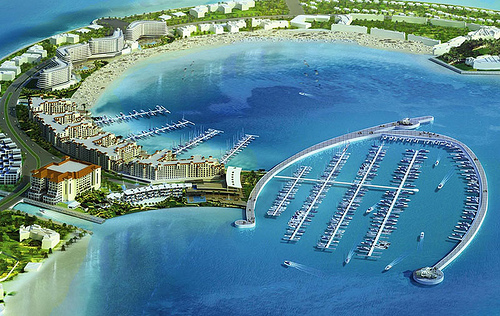 Business & Finance Group - Tourism - Dubai: The rise of the UAE as a top travel destination in the past few years has prompted other GCC countries to take a closer look at tourism as a key driver for economic growth.
Oman, eager to diversify its economy much along the same lines as the UAE, recently resolved to develop the tourism sector.
"The government decided to develop tourism and diversify the economy by not letting just the oil play the 100 per cent role," said Salim Bin Adey Al Mamari, director-general of Oman's Tourism Promotion department.
"Other sectors can also play that role and tourism is one of them."
Al Mamari said Oman had put a strategy in place in 2008, spending more than $40 million (Dh146.9 million) per year to promote the country internationally.
Although 2009 suffered a decline in the number of tourists compared to 2008, Al Mamari said that there was a significant 7.5 per cent growth in 2008 over the previous year.
However, Oman is now targeting a different type of tourist.
"We are not looking for backpackers but for those who will spend money and who will stay more in the country," he said.
"We are targeting high-end tourists."
Some of the major investments in Oman right now include resorts, hotels, domestic airports in addition to a convention centre.
Al Mamari said the future of tourism looked promising for many countries in the GCC region. He, however, urged GCC governments to exercise caution as to how and where they made their investments.
"The governments should be careful when they are developing their countries because tourism is meant to live for generations to come and not just for certain years," he said.
"They should concentrate on the minds of the people who will be handling the sector itself because it's meant to diversify the economy of the country."
In Kuwait it's a similar scenario.
"I think [the UAE's] experience has let other countries realise that tourism can bring in a lot of money for the countries," said Majda Behbehani, Kuwait's director of Marketing and Foreign Relations for Tourism.
"With the oil there can also be tourism," she said.
Majda said that the financial stability in GCC countries has always directed the flow of tourism from those countries and not to them.
However, that's changing as governments are putting in place strategies to boost their tourism sectors.
Kuwait, which received about 500,000 visitors last year — the majority from Saudi Arabia, is currently in the process of formulating a five-year plan to promote family tourism targeted at GCC countries.
"We hope to reach a million tourists in the next two years," she said.
Qatar, a well-known business destination, has made significant investments to encourage cultural, sport and leisure tourism.
In 2008, Doha allocated $17 billion to develop Qatar's tourism infrastructure over five years.
Much has been invested in sports infrastructure as Qatar will host the 2011 Asian Cup and make a bid for the 2022 World Cup.
Hotel rooms
As a lot of the focus is on promoting business and upscale tourism, the number of hotel rooms being brought to the market is increasing year by year.
In 2009, half a dozen hotels opened in Qatar, bringing 2,000 hotel rooms to the market. By the end of this year, nearly 8,000 rooms are scheduled to enter the market, according to a report by the Qatar Tourism Authority.
A cultural village is currently under development which will include an opera house, art gallery and international museums. Last December Qatar opened the Museum of Islamic Art. |